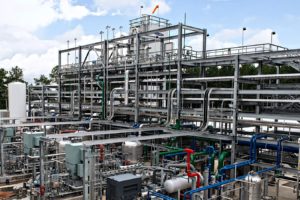As the United Nations’ Rio+20 conference on sustainable development takes place in Rio de Janeiro this month, a prime example of the environmental and social tensions that accompany development will be playing out in northern Brazil. There, on the Xingu River in the Amazon basin, a consortium of companies is building the Belo Monte dam complex, which will be the world’s third-largest hydroelectric project, generating abundant electricity for Brazil’s rapidly growing economy.
Conservationists and local indigenous people contend the Belo Monte project will exact a significant environmental and human toll, flooding 260 square miles of rainforest and displacing more than 20,000 people who depend on free-flowing rivers for their livelihoods. Environmentalists also warn that the $16 billion Belo Monte project is the vanguard of more than 100 dams and hydroelectric projects planned throughout the Amazon basin in Brazil, Ecuador, Peru, Colombia, and Bolivia. Should these proposed dams be built, critics say, rapid development and resource extraction will soon follow, leading to a major loss of the Amazon’s forests and the transformation of its great rivers into a series of reservoirs.
Multimedia journalist Charles Lyons traveled to the site of the future dam complex, scheduled to begin producing electricity within several years, and produced this video report that lays out both sides of this controversial project.
video
Belo Monte Dam: Conflict in the Amazon
The Belo Monte dam, now under construction in the Amazon, is heralded as an abundant power source for Brazil’s burgeoning economy. But critics contend the project’s benefits are outweighed by the environmental and social costs. In a Yale Environment 360 video report, Charles Lyons explores both sides of this controversial project.
More From E360
-
ANALYSIS
Trump 2.0: This Time the Stakes for Climate Are Even Higher
-
Oceans
As Ocean Waters Warm, a Race to Breed Heat-Resistant Coral
-
Energy
Will Hydrogen Hubs Be a Clean Energy Boom or Boondoggle?
-
BIOECONOMY
Brazil Hopes to Make the Amazon a Model for a Green Economy
-
INTERVIEW
How to Grow a Forest: It Takes More Than Just Planting Trees
-
Solutions
Greening Concrete: A Major Emitter Inches Toward Carbon Neutrality
-
INTERVIEW
As Disinformation Swirls, Meteorologists Are Facing Threats
-
Biodiversity
Ukraine Rewilding: Will Nature Be Allowed to Revive When War Ends?
-
Oceans
Researchers Parse the Future of Plankton in an Ever-Warmer World
-
Climate
What’s Causing the Recent Spike in Global Temperatures?
-
Biodiversity
How Traffickers Got Away with the Biggest Rosewood Heist in History
-
INTERVIEW
Why We Need a Strong Global Agreement on Plastics Pollution


